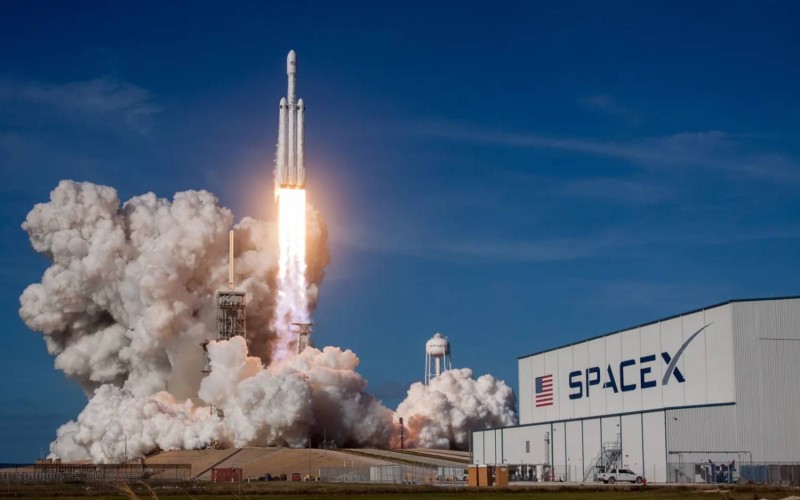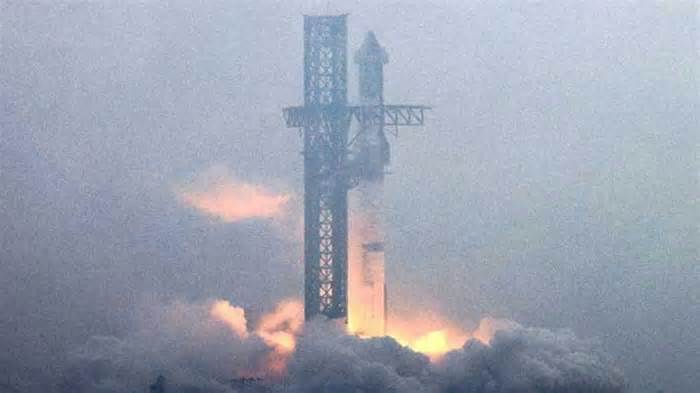
The billionaire CEO who made history with SpaceX describes facing the 'vacuum of death' in only a spacesuit
- by AOL
- Nov 14, 2024
- 0 Comments
- 0 Likes Flag 0 Of 5

November 14, 2024 at 10:31 AM
Jared Isaacman returned from the Polaris Dawn mission he led with SpaceX on September 15.
Polaris Program / AFP — Polaris (@PolarisProgram) September 13, 2024
In a Netflix docuseries about Isaacman's first SpaceX mission, Inspiration4, his wife describes worrying about what could go wrong. This time around, with Polaris Dawn, those concerns seemed to improve, Isaacman said.
"I think my family and my wife, specifically, were much more charged up and enthusiastic than they were the first time," he told BI.
Isaacman attributed some of that increased ease to a successful first mission.
The team prepped extensively for Polaris Dawn, spending hundreds of hours in pressurized suit testing. The SpaceX suits were tested in a vacuum chamber at NASA's Johnson Space Center, which Isaacman said was important to make sure none of the materials would "create a toxic environment or explode."
The suits have a flame-resistant outer layer and thermal garment material to regulate temperature.
Screenshot/Polaris Program
Reentry into Earth's atmosphere, even with the prep and training from SpaceX, remained a point of nervousness. If there's a problematic amount of debris damage to the heat shield or thermal protection systems, there's "no backup plan," Isaacman said.
The CEO said that while he and his family recognize the risks, they keep the mindset that it's worth it.
He's going back — and expects breakthroughs are 'right around the corner'
Once he landed back on Earth, Isaacman went through about three days of medical tests before largely resuming business as usual.
He's been on the road a lot, visiting facilities and doing debriefs, and estimates that he's slept in his bed only four or five times since his journey to space.
Isaacman has maintained his role as CEO, which he said helped make it possible for him to work with SpaceX and St. Jude. Isaacman funded both Polaris Dawn and his previous mission with SpaceX. The first mission raised more than $240 million for St. Jude and was named Inspiration4 in an effort to inspire support for the hospital.
His time in space isn't over yet, though — the Polaris Program is intended to be three missions mapped out over the next six to nine years, Isaacman said. He said he expected there'd be more progress on suit development in the second Polaris mission, and the third would be the first crewed flight of SpaceX's Starship, the most powerful rocket system ever built, which was designed to realize Musk's dreams of settling Mars.
Isaacman shares the SpaceX cofounder's view that humans will be multiplanetary — and he said the technological means to make it possible were "right around the corner." He anticipates fully reusable Starships becoming a tangible reality within the next decade and launching on a frequent basis, whether it be every week or month. That could lead to all sorts of space-related experimentation, including asteroid mining or the establishment of bases on the moon or Mars, Isaacman said.
But the challenges don't end with the formation of an off-world base — you have to ensure the astronauts maintaining it stay alive and sane, he said.
"Actually having a civilization that can be successful and thrive in space is a much different set of problems," Isaacman said.
Roughly half the people who go to space get sick, he said. Following the landing, Isaacman said, one of his SpaceX crew members experienced a minor case of spaceflight-associated neuromuscular syndrome, which impacts vision. While the symptoms subsided shortly after, he pointed to it as an example of some of the health risks people face when venturing into space.
There's also never been surgery or childbirth in space, and there are psychological challenges of living away from Earth, Isaacman said.
"You're going to be in a bubble or living in a cave or underground on Mars for the entire time you're there," Isaacman said. "We'll never get better than that. So there's a lot of things that need to be solved."
While humans don't have it quite figured out yet, Isaacman sees a future in which humans walk on Mars.
"We just got to proceed with caution and just make sure we get it right," Isaacman said. "And if we do, we stand to learn so much that can change the course of trajectory of humankind."
Read the original article on Business Insider
Show comments
Please first to comment
Related Post
Stay Connected
Tweets by elonmuskTo get the latest tweets please make sure you are logged in on X on this browser.
Sponsored
Popular Post
Tesla: Buy This Dip, Energy Growth And Margin Recovery Are Vastly Underappreciated
28 ViewsJul 29 ,2024






 Energy
Energy



















